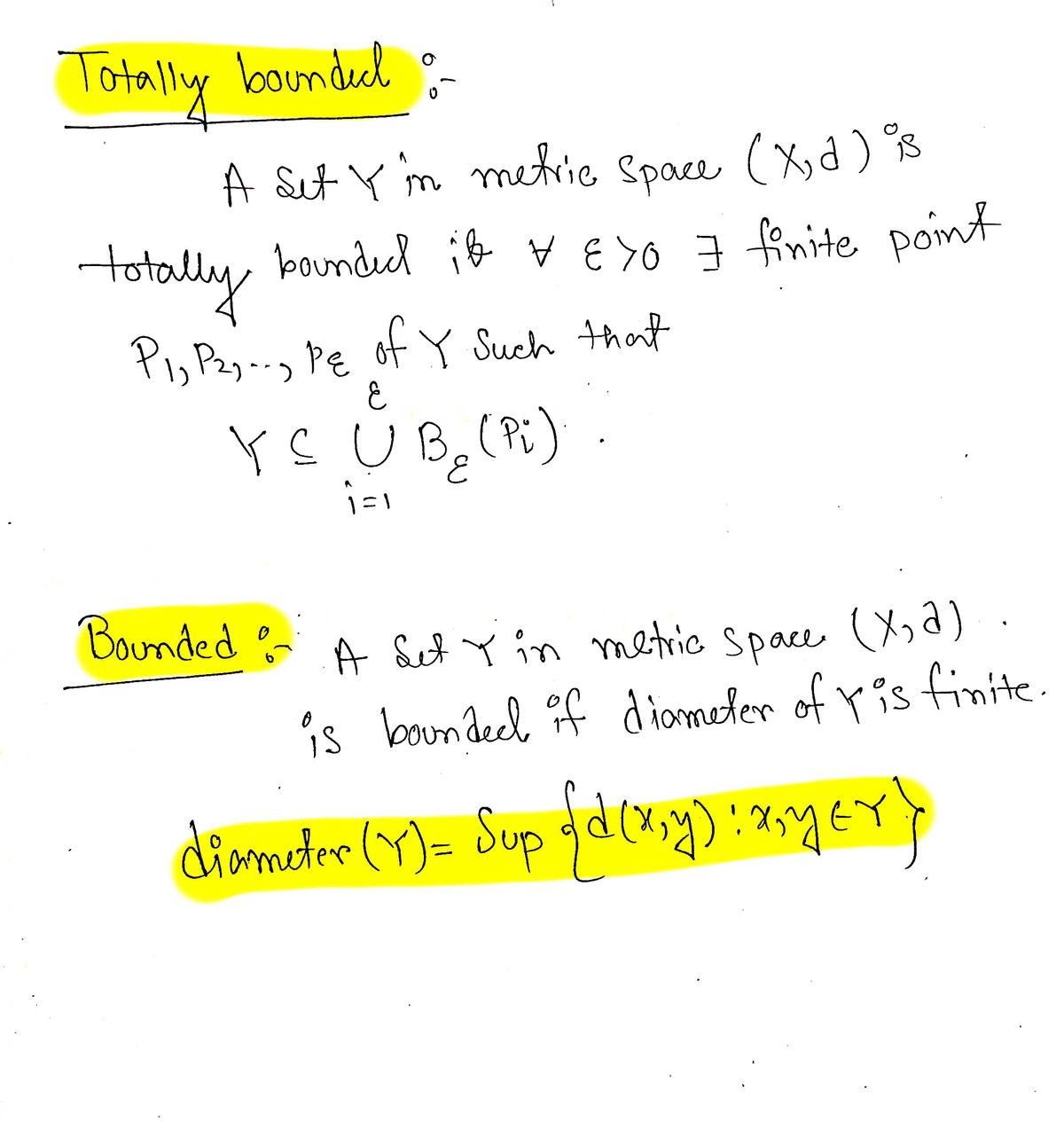that any bounded set in totally bounded. Show 3 n Rh
Advanced Engineering Mathematics
10th Edition
ISBN:9780470458365
Author:Erwin Kreyszig
Publisher:Erwin Kreyszig
Chapter2: Second-order Linear Odes
Section: Chapter Questions
Problem 1RQ
Related questions
Question

Transcribed Image Text:**Topic: Mathematical Concepts**
**Title: Understanding Bounded and Totally Bounded Sets in \(\mathbb{R}^n\)**
**Introduction:**
This section explores the concept of bounded and totally bounded sets within the context of \(\mathbb{R}^n\).
**Key Concept:**
"Show that any bounded set in \(\mathbb{R}^n\) is totally bounded."
**Explanation:**
- **Bounded Set:** A subset \(A\) of \(\mathbb{R}^n\) is considered bounded if it is contained within some large enough ball of finite radius. In other words, there exists a point \(a \in \mathbb{R}^n\) and a radius \(R > 0\) such that \(A \subseteq B(a, R)\), where \(B(a, R)\) is the ball of radius \(R\) centered at \(a\).
- **Totally Bounded Set:** A set is totally bounded if for every \(\epsilon > 0\), it can be covered by a finite number of open balls of radius \(\epsilon\). This is a stronger condition than merely being bounded.
**Objective:**
Through this exploration, we aim to demonstrate that if a set is bounded in \(\mathbb{R}^n\), it also satisfies the condition of being totally bounded.
**Further Resources:**
To deepen your understanding of these concepts, we recommend exploring additional mathematical resources that cover metric spaces and their properties.
---
This transcription aims to help students grasp the relationship between boundedness and total boundedness, two fundamental concepts in topology and analysis.
Expert Solution
Step 1

Step by step
Solved in 3 steps with 3 images






